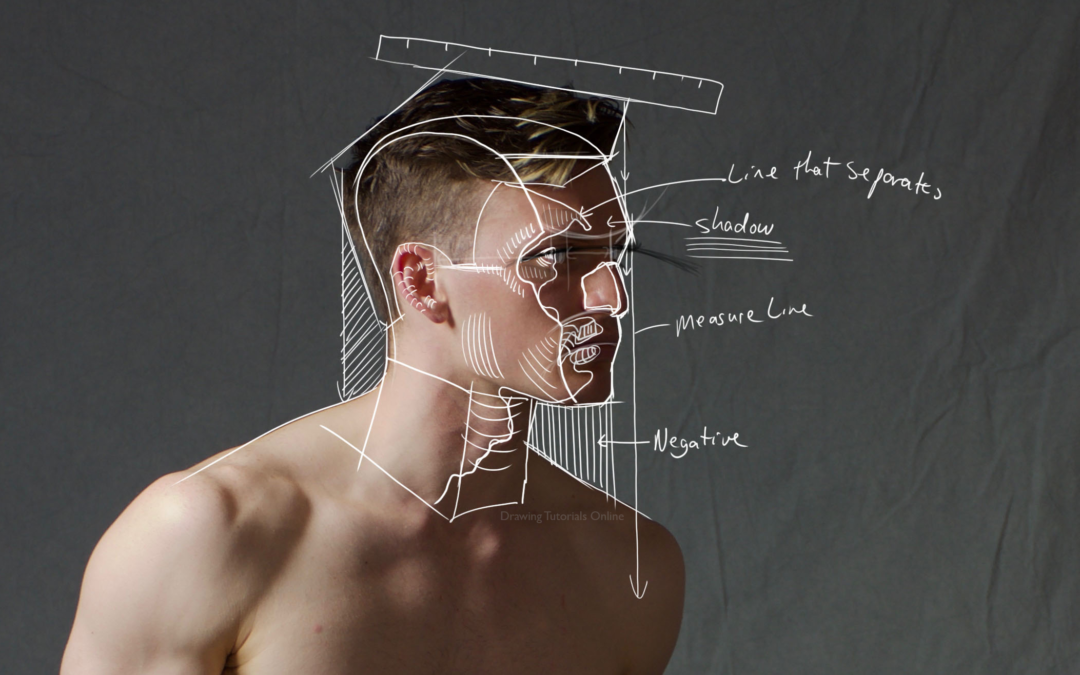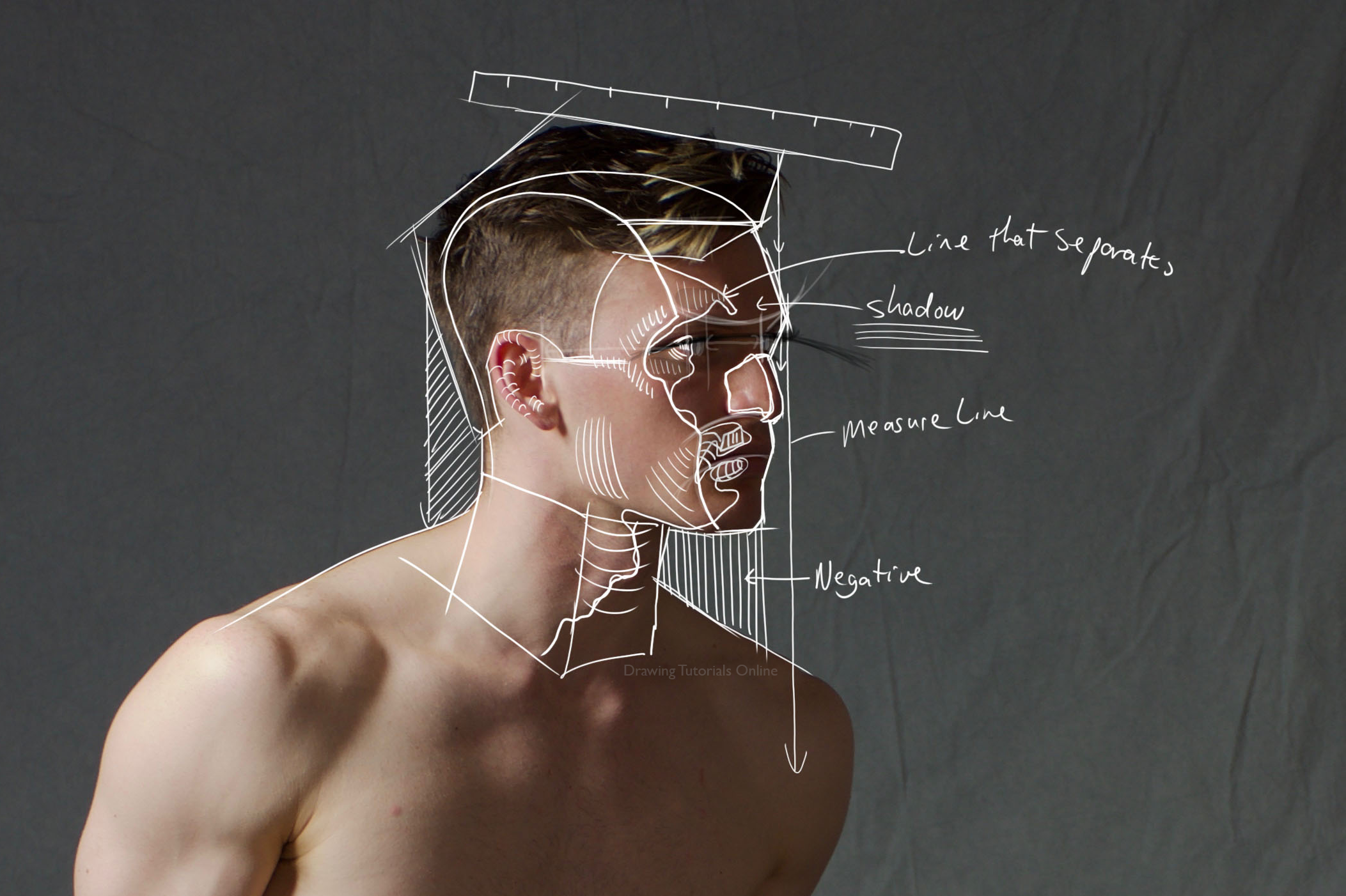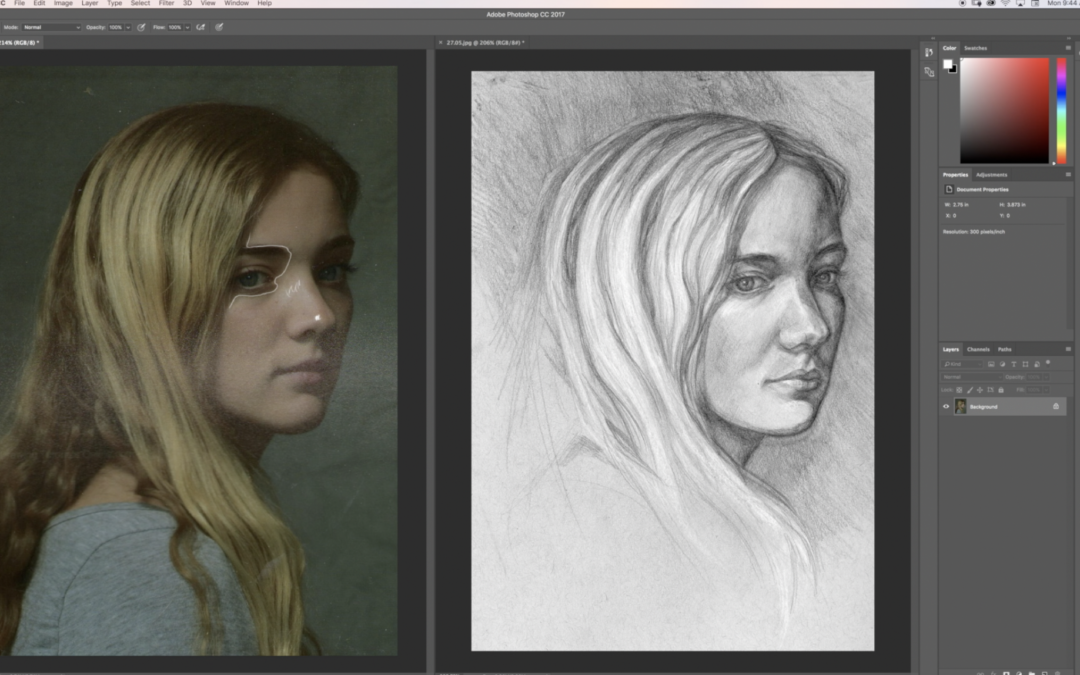
First Lines When Drawing A Portrait – Process
I just recently added a brand new portrait drawing course in the member’s area over at Drawings Tutorials Online. This particular course focuses on drawing smaller portraits.
With every course, I like to review certain techniques via a screencast video. This particular video reviewed how I start a portrait drawing. Especially a smaller one, say about two inches tall.
I always start with the angles, combined with measure lines and negative space. Nothing new right?
No, it’s not new, I have been teaching these same techniques for many years. Unfortunately, I still see many artists who struggle with drawing a likeness. Don’t fall into the trap of just knowing the techniques because you have heard about them.
You have to constantly practice these portrait drawing techniques over and over again until you master them. It’s not enough to just know them in theory. You need to put them into practice.
Just replace the white lines in the video within photoshop with pencil lines on your drawing pad. Start off with light pressure at first.
Enjoy the video.
If you are interested in learning many more techniques similar to these consider a membership to Drawing Tutorials Online.



